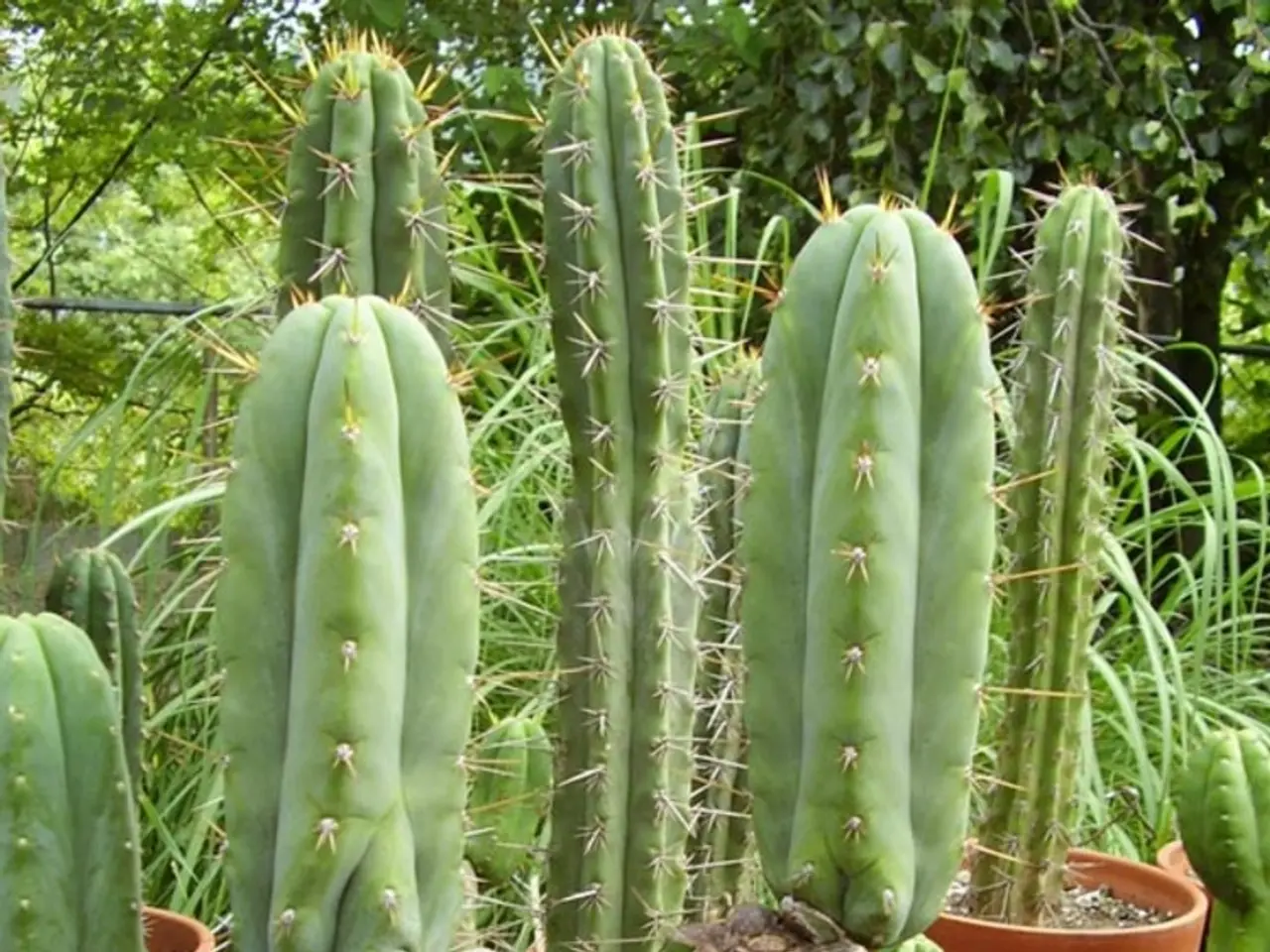Caring for Cacti: A Guide
Caring for cacti indoors requires specific attention to ensure they thrive. Arranging and hanging them effectively is crucial for their growth and aesthetic appeal. Here's an expert guide to help you create a beautiful, healthy cactus display.
Choosing the Right Containers
Selecting the right container is vital for cacti health. Always opt for pots with drainage holes to prevent water from pooling at the roots, potentially causing rot. Terracotta pots are ideal due to their quick drying nature and enhanced airflow to the roots.
Creative display options abound, such as vintage teacups, shallow bowls, and hanging planters, which are perfect for small spaces and work well with trailing or compact varieties. If using containers without drainage, like teacups, add a layer of pebbles at the bottom to improve drainage and reduce the risk of overwatering.
For a dramatic effect, mount lightweight frames or pocket planters on walls to create living art that doesn’t take up floor space. These setups naturally provide good airflow and drainage, mimicking the cacti's native environment.
Soil and Planting
Use a porous, well-draining cactus or succulent soil mix. You can make your own by combining equal parts potting soil, perlite, and coarse sand. Choose cacti that match the size and depth of your container. Slow-growing or miniature varieties are ideal for small or unconventional pots. Plant the cactus at the same depth it was in its previous pot. Gently firm the soil around the base to provide stability.
Lighting and Placement
Cacti thrive in bright, indirect sunlight for at least six hours a day. South-facing windows are ideal, but protect plants from harsh midday sun, which can cause burns. Hang planters near windows or under skylights to maximize light exposure. Floating shelves and wall-mounted gardens also enable you to position plants at optimal heights for sunlight without cluttering surfaces. During darker months, supplement with grow lights to maintain healthy growth.
Watering and Maintenance
Water sparingly, allowing the soil to dry out completely between waterings. Water deeply, then wait until the top inch of soil is dry before watering again. Reduce frequency in winter when growth slows. Avoid overhead watering; instead, water at the base to prevent moisture from sitting in the rosettes or on the cactus body, which can lead to rot. Fertilize with a diluted houseplant fertilizer once during the growing season (spring/summer).
Styling Tips for Aesthetic Appeal
Mix textures and colours by pairing spiky varieties with smooth, rosette-forming succulents for contrast. Arrange containers in clusters at varying heights to create depth and make a statement. Match planters to your home decor to integrate greenery seamlessly into your living space.
Summary Table: Key Factors for Arranging and Hanging Cacti
| Factor | Best Practice | Why It Matters | |-------------------|-----------------------------------------------|--------------------------------------| | Container | Drainage holes, terracotta, vertical frames | Prevents root rot, enhances airflow | | Soil | Well-draining cactus mix | Mimics natural habitat, avoids rot | | Light | Bright, indirect, 6+ hours daily | Promotes healthy growth, prevents etiolation | | Watering | Deep, infrequent, let soil dry between | Prevents overwatering, root rot | | Display | Grouped, varied heights, thematic planters | Enhances visual appeal, saves space |
Expert Tips
“Use a little spoon to water these guys—just a splash is enough. Too much water will wreck your mini garden fast!”
“Go for lightweight frames for easy mounting. Fast-draining soil keeps your cacti from sitting in water.”
By following these guidelines, you can create a stunning, healthy display of cacti that thrives in your home environment while complementing your interior design. When hanging cactus plants, ensure they receive enough window light and are not difficult to water. If cactus plants tend to tip or vine, consider using an indoor window box. Light is an important factor when arranging cactus or succulent plants, and window space should be evaluated carefully. Small tables next to the windowsill can be used to create a desert scene while keeping plants out from underfoot. Consider the height of hanging cactus plants to avoid blocking light or making watering difficult. If windows come together at the corner of a room or if there are windows on one side of a corner and a mirror on the other, a greater number of smaller plants can be arranged. Hanging cactus plants is another option, ensuring the support of the pot, plant, soil, and water. Keeping all plants in one location can make it easier to take care of them. Glass shelves work well for stable, non-top-heavy cactus plants. A well-grown century plant is attractive but dangerous unless it is completely out of traffic lanes. Placing cactus or succulent plants together can complement each other. The growth of a cactus or succulent collection requires careful consideration for arranging plants. Reinforce cord and leather hangers with transparent nylon filament or lightweight chain to avoid messy accidents. Hangers of wire or nylon may last longer than cord or leather. One-fourth-inch plate-glass shelves, attached across the front of windows, can be both attractive and efficient for additional cactus spaces. In a small window, one or two large cactus plants or a number of small ones neatly arranged look better than several large ones stuck together.
- For a harmonious blend of science and lifestyle, choose decorative containers that ensure proper drainage for cacti grown indoors, such as those made of terracotta or vintage teacups with a layer of pebbles at the bottom.
- When considering home-and-garden design, mount vertical frames or pocket planters on walls for an aesthetic appeal that doesn't take up floor space, provisioning good airflow and drainage akin to the cacti's natural habitat.




